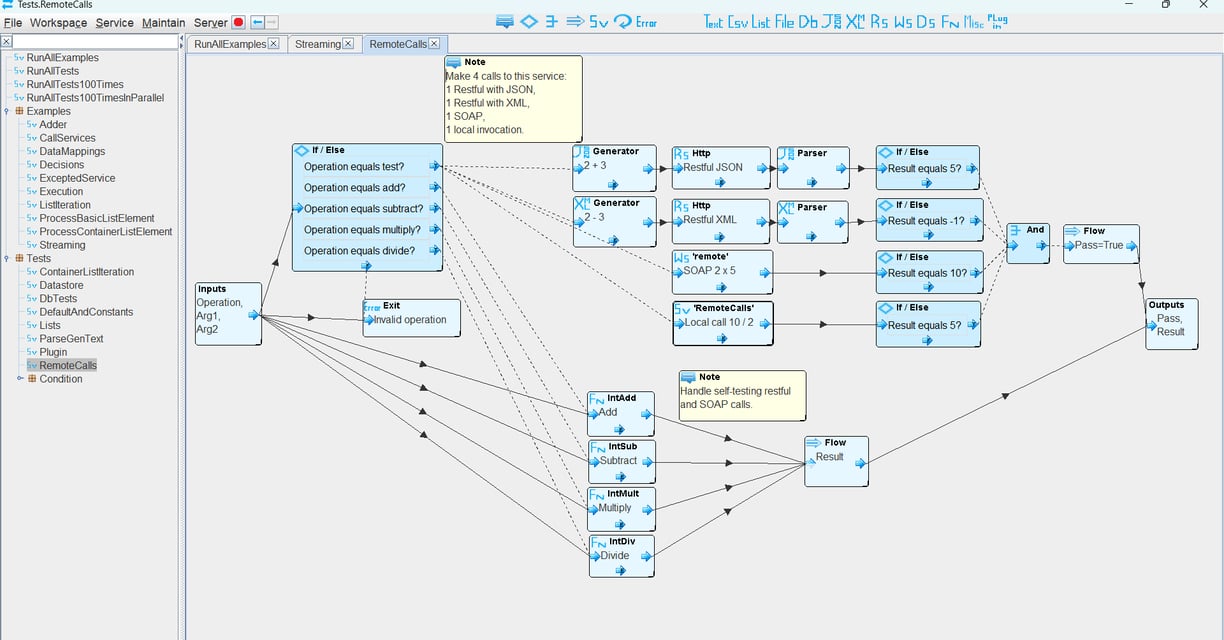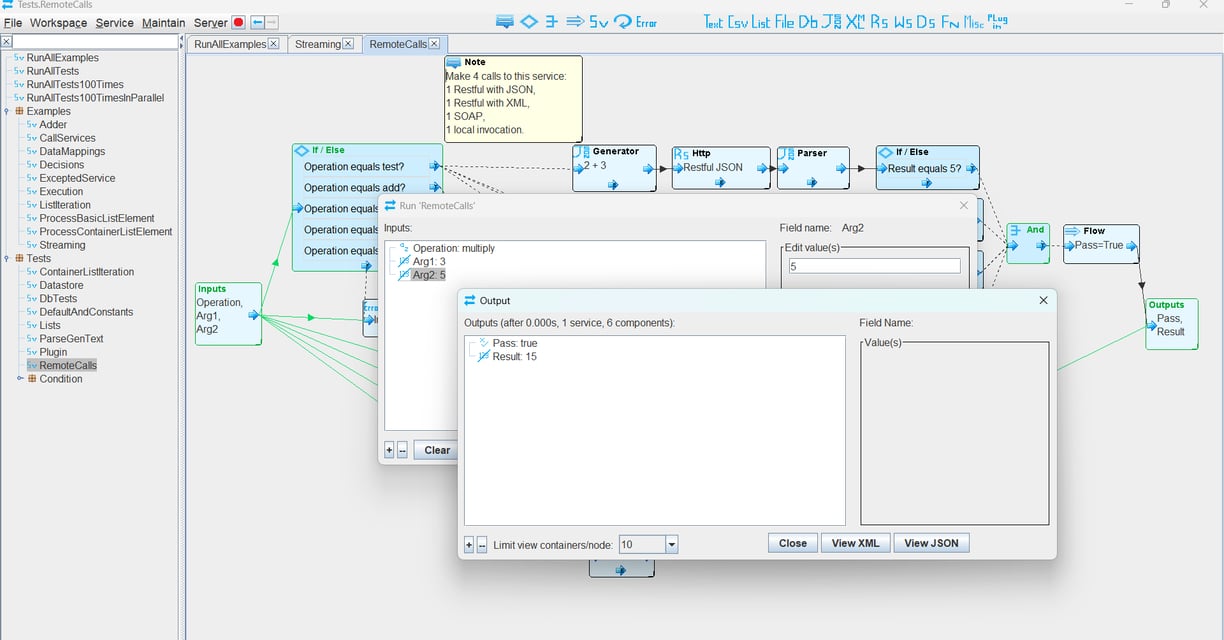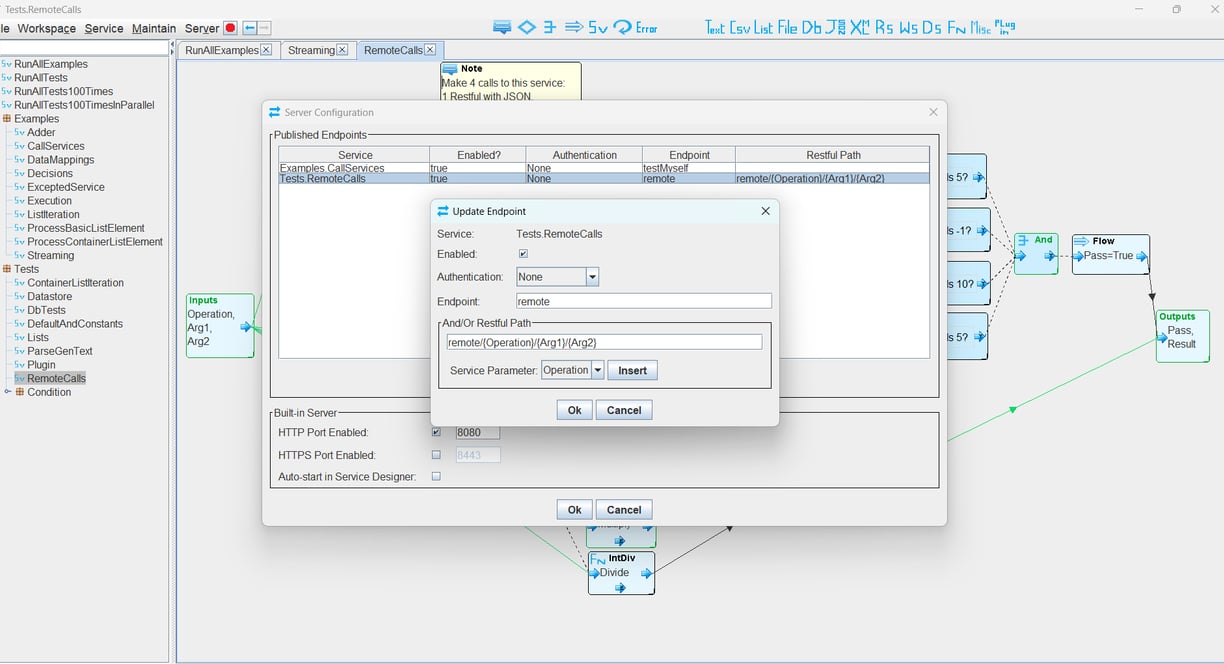Service Designer
Slurp is a single binary, slurp.exe, which can be run on Windows or Linux and does not need to be installed as such. For Linux, run it with "java - jar slurp.exe". When you run it, the Service Designer will be displayed to enable you to create, test and deploy services. For a quick start, you can use the services available from the downloads page. Click Configuration>Import, and import all services from either XML file. For help at any time, just click menu File>Help.


Testing in GUI
Click menu Service>Run. Enter the required service inputs then click 'Run' or 'Debug' to see the service outputs.


Testing with Built-in Web Server
Click menu Server>Configure. Set an 'Endpoint' and/or 'Restful Path' for the service using 'Add', and then click 'Ok'. Start the built-in server by clicking on the circular red button.
Invoke the service from a browser with either http://localhost:8080/remote.json?Operation=multiply&Arg1=3&Arg2=5 or http://localhost:8080/remote/multiply/3/5.json, should display:
{"Pass":true,"Result":15}
Alternatively, for XML output, use the same URLs but replace .json with .xml, should display:
<s:root xmlns:s="http://slurp.com/io"><Pass>true</Pass><Result>15</Result></s:root>
Structured input data is best passed to the service in the request body as either XML or JSON. To see the expected schema for the input/output, right-click your service Inputs/Outputs component and select 'Generate', then either 'XSD for Service Input/Output' or 'JSON Schema for Service Input/Output'.
Alternatively, for SOAP invocations, get the WSDL for the service endpoints from http://localhost:8080?wsdl and call a service via Slurp's webservice component (Ws) or another SOAP client of your choosing.


Testing by Remote Deployment
Having assigned an 'Endpoint' and/or 'Restful Path' to the service (see previous method) then select menu Server>Create Deployment. Save the created WAR file and deploy it to a Java web server. Use the same address to test the service, except set the host and port appropriately for your Java web server.
Stand-alone Service Provision
To keep things simple and do away with a separate web server, you can run Slurp as a stand-alone data service, either as a Windows service or a Unix daemon. Just follow the simple set up instructions in the downloadable Slurp PDF or from Slurp's menu File>Help.
Slurp Data and Slurp Data Services are trademarks of Active Websites Limited. A company based in Fleet, Hampshire, UK, since 2004.
Companies House registration number 5110432. VAT registration number 860990203. ©Active Websites Ltd.